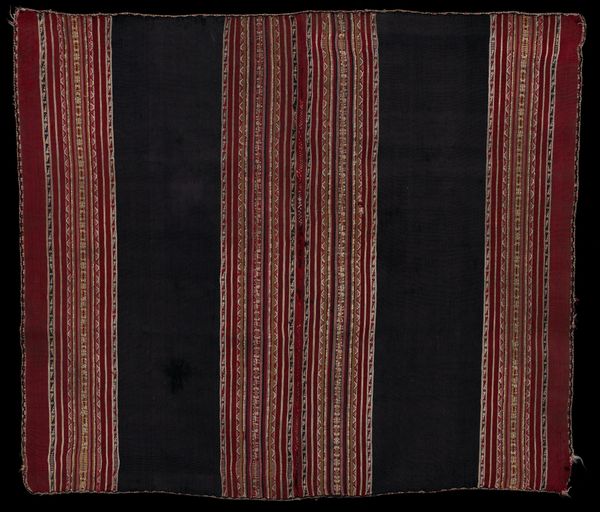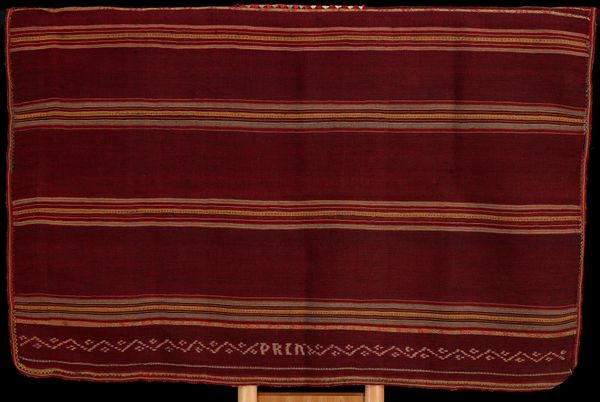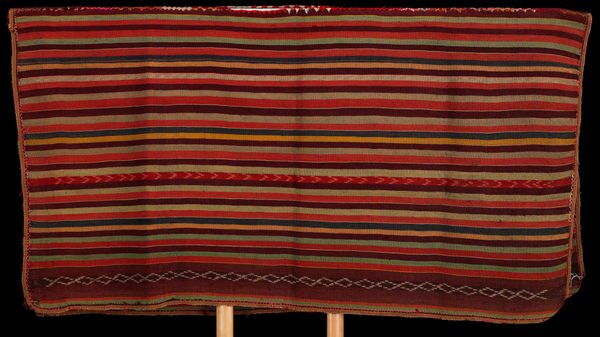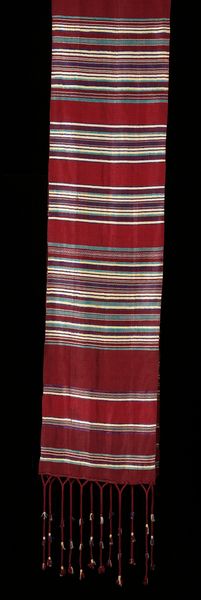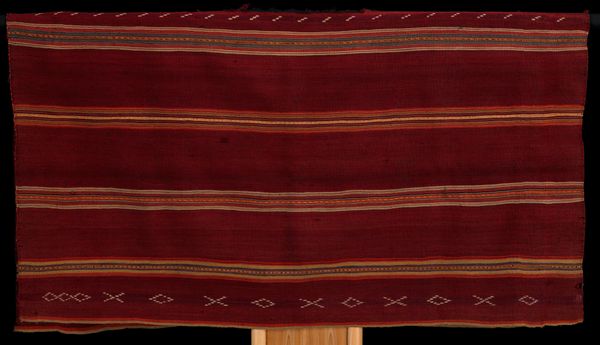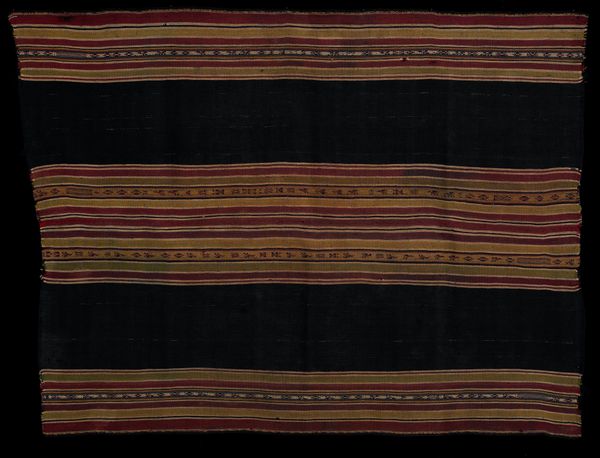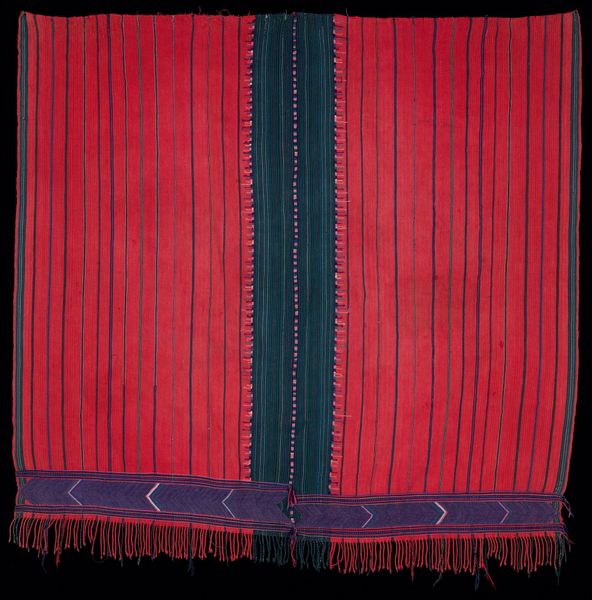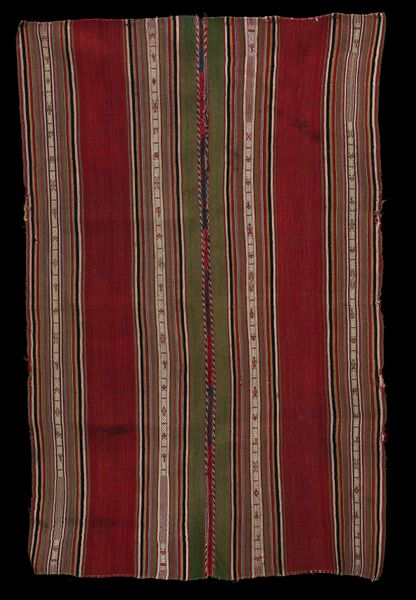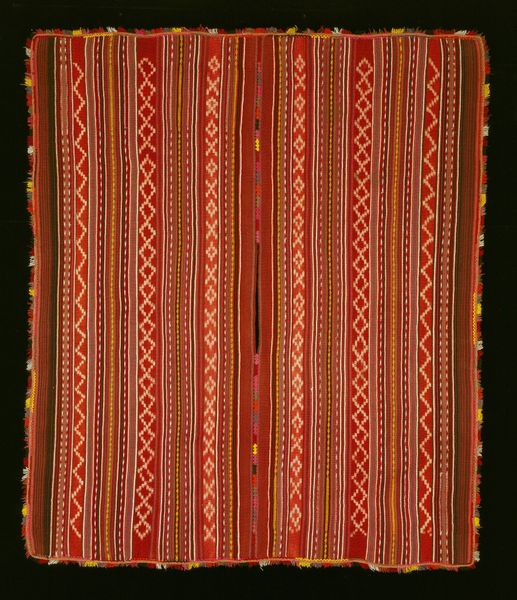
fibre-art, weaving, textile
#
pattern heavy
#
fibre-art
#
weaving
#
textile
#
fashion and textile design
#
geometric pattern
#
pattern design
#
repetitive shape and pattern
#
geometric
#
repetition of pattern
#
pattern repetition
#
textile design
#
layered pattern
#
combined pattern
#
indigenous-americas
Dimensions: 210.2 × 167.6 cm (82 3/4 × 66 in.)
Copyright: Public Domain
Curator: Welcome. Before us hangs an Aymara "Poncho," estimated to have been created between 1850 and 1900. This striking textile, crafted from wool, is now part of the Art Institute of Chicago's collection. Editor: Immediately, I'm drawn to the materiality of it. You can almost feel the weight of the wool, the labor involved in spinning and weaving those tightly packed vertical lines. The dark reds contrasted against the pale yellows, browns, blacks, and whites add a nice effect. Curator: Precisely. Considering the era, this poncho tells us much about Aymara identity. The specific arrangement of the colors and the density of the weaving would speak volumes about the wearer’s community ties, status, and even gender roles within their society. Editor: And consider the means of production. The raising of the sheep, the carding and spinning of the wool, the dyeing processes…each step relies on a deep understanding of the environment and established traditional practices passed down over generations. This is knowledge intensely intertwined with material constraints and possibilities. Curator: Absolutely. Furthermore, this poncho represents a site of resistance, and a beautiful counter-narrative, in a period dominated by colonial influence in Latin America. The Aymara maintained their cultural expression through their textiles. The very act of creation was political. Editor: I'd agree. This wasn't some industrial factory churning out identical goods; it represents a deliberate handcraft tradition, an insistence on keeping alive ways of working. The subtle imperfections that emerge from the process, these only emphasize the value of labor, both physical and intellectual. Curator: Ultimately, the "Poncho" functions not only as garment or artwork, but as a critical document, reflecting a period of cultural preservation amidst socio-political struggles and highlighting the ingenuity and resilience of Aymara people. Editor: For me, it highlights our connection with the environment through material, and to understand production as crucial for reading an image.
Comments
No comments
Be the first to comment and join the conversation on the ultimate creative platform.
